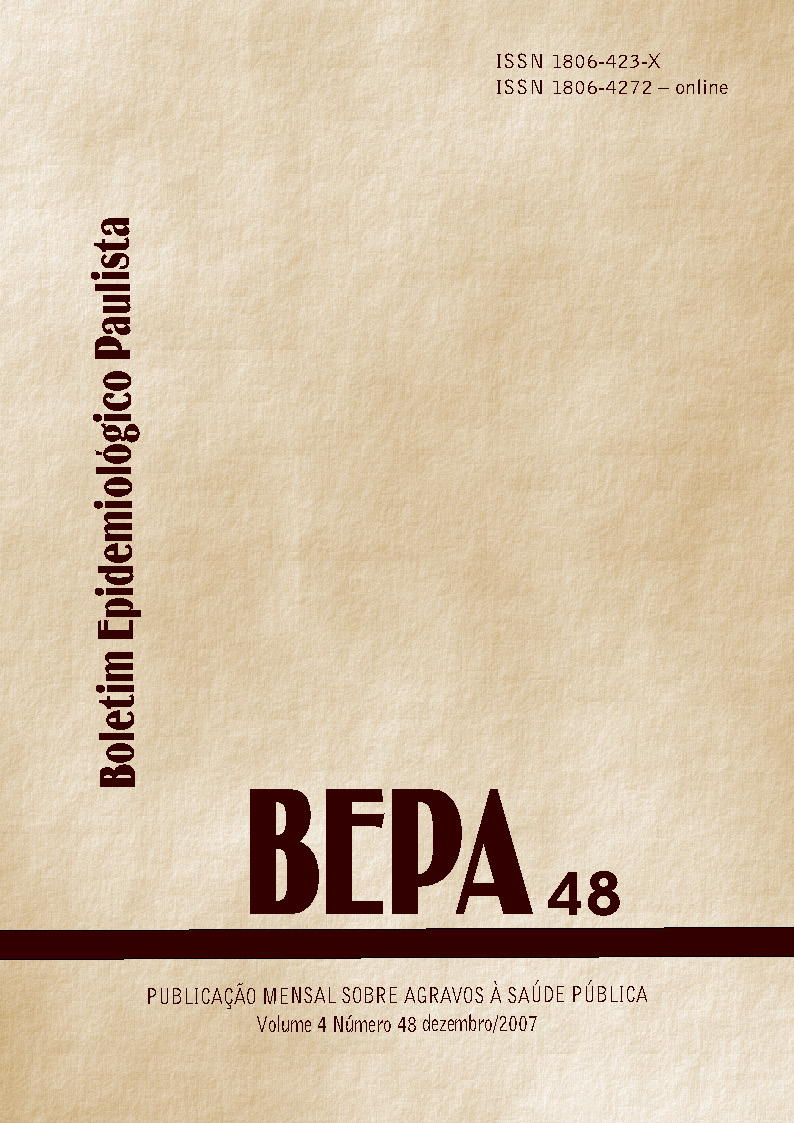Rubella: epidemiological situation and control measures
Keywords:
rubella, congenial rubella syndrome, epidemiological surveillance, rubella vaccineAbstract
Rubella was first identified in Germany and was considered a benign disease when, in 1941, Normal MacAlister Gregg, an Australian ophthalmologist, examining many newborns with congenital cataract, born to mothers with a history of rubella in the beginning of the pregnancy, associated maternal infection to cataract occurrence. Post natal or acquired rubella is an exanthema benign disease self contained, characterized by low grade fever and lynphadenopathy in general retro auricular, cervical and occipital. When the disease occurs in susceptible pregnant women, especially in the first trimester, causes congenital malformations, such as audition deficiencies, congenital cardiopathies cataracts and delay of neuropsicho and motor development. After the elimination of smallpox, the certificate of polio elimination and also the elimination of the circulation of the autochthonous measles virus, American countries established the goal to eliminate rubella and SRC until 2010.
Downloads
Metrics
References
Cooper LZ, Preblud SR, Alford CA. Rubella. In: Remington JS, Klein JO, eds. Infectious disease of the fetus, newborn, infant. Fourth ed. Philadelphia, PA:WA Saunders Co, 2000.
Gregg NM. Congenital cataract following German measles in the mother. Trans Ophthalmol Soc Aust 1941;3:35-46.
Plotkin S. Rubella vaccine. In: Plotkin AS, Orestein WA, eds. Vaccines. Third ed. Philadelphia, PA:WA Saunders Co, 2004, p409-39.
Orenstein WA, Bart KJ, Hinman AR et al. The opportunity and obligation to eliminate measles from the United States. JAMA 1984;251:1988.
Plotkin SA. Rubella eradication. Vaccine 2001;3311-9
American Academy of Pediatrics. Report of the Committee on Infectious Disease. Red Book, 26th ed. Elk Grove Village, 2003.
Cherry JD. Rubella vírus. In Feigin RD, Cherry JD, eds. Textbook of Pediatric Infectious Disease. 4th ed. Philadelphia, PA: WA Saunders Co, 1998.
Miller E, Cradock-Watson JE, Pollock TM. Consequences of confirmed maternal rubella at sucessives stages of pregnancy. Lancet 1982;2:781-94.
Enders G. Rubella antibody titers in vaccinated and nonvaccinated women and results of vaccination during pregnancy. Rev Infect Dis 1985;7(Supl 1):S103-7
Reef SE, Plotkin S, Cordero JF, KatzM, Cooper L, Schwartz B, Zimmerman-Swain L, Danovaro-Holliday MC, Wharton M. Preparing for elimination of congenital rubella syndrome (CRS): summary of a workshop on CRS elimination in the United States. Clin Infect Dis 2000;31(1):85-95.
Brasil. Ministério da Saúde. Guia de Vigilância Epidemiológica, 6ª. ed. Brasília, 2001.
CVE. Norma do Programa de Imunização. Secretaria de Estado da Saúde de São Paulo, 2ª. ed. Revisada em novembro de 2000.
PAHO. Brazil accelerates control of rubella and prevention of congenital rubella syndrome program. EPI Newsl 2002;24:1-3.
Castillo-Solórzano C, Carrasco P, Tambini G, Reef S, Brana M, Quadros CA. New horizons in the controlo f rubella and prevention of congenital rubella syndrome in the Américas. JID 2003;187(Suppl1):146-152.
Brasil. Manual da Campanha Nacional de Vacinação para Eliminação da Rubéola no Brasil, 2008 (proposta preliminar).
Hutchins SS, Baugham AL, Orr M, Haley S. Vaccination levels associated with lack measles transmission among preschool-aged population in the United States 1989-91. J Infected Dis 2004;189(Suppl1):S108-15.
Downloads
Published
How to Cite
Issue
Section
License
Copyright (c) 2007 Divisão de Imunização

This work is licensed under a Creative Commons Attribution 4.0 International License.










